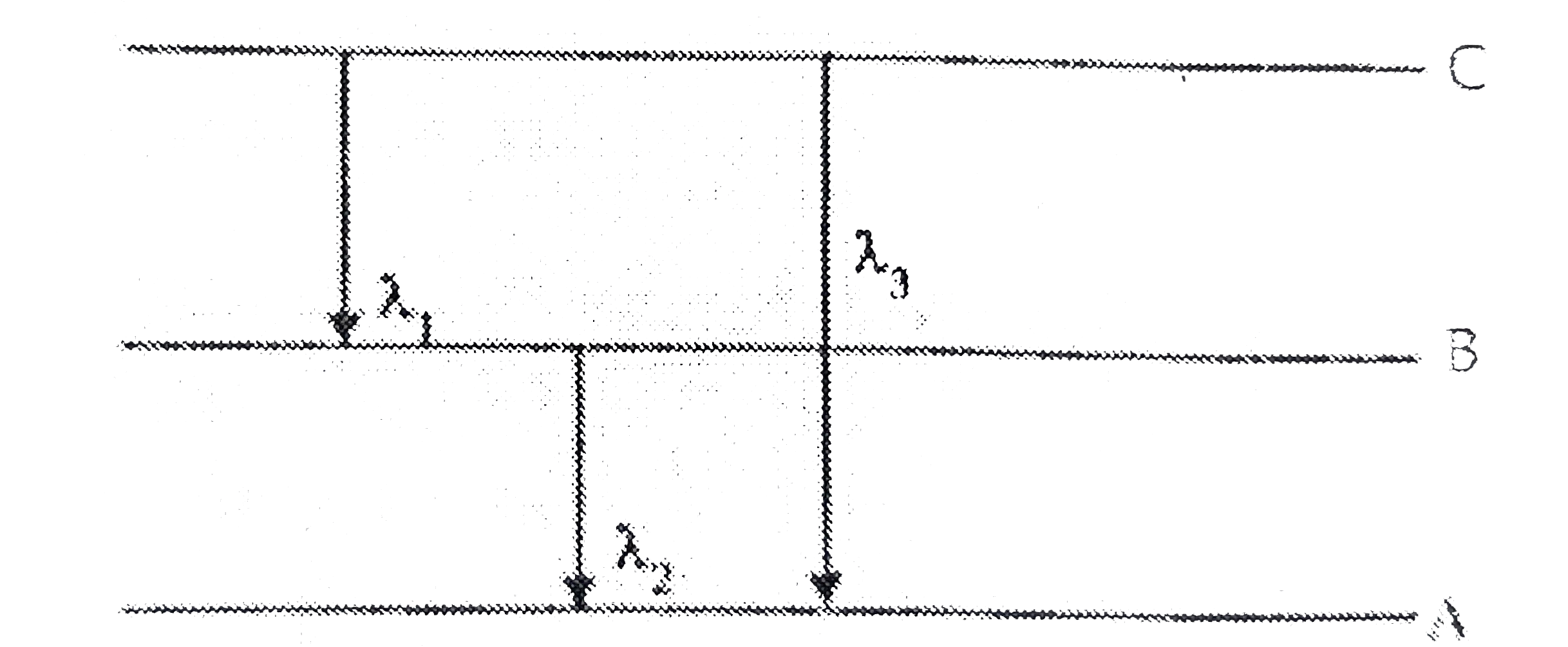State Bohr's quantum condition for stationary orbits in terms of de-Broglie wavelength.
Total length of an orbital path of electron in nth state of atom should be n times (where n is an integer), the value of de-Broglie wavelength . Thus
Topper's Solved these Questions
- ATOMSBOOK - U-LIKE SERIESCHAPTER - ATOMSEXERCISE - SHORT ANSWER QUESTIONS
30 Videos
- ATOMSBOOK - U-LIKE SERIESCHAPTER - ATOMSEXERCISE - LONG ANSWER QUESTIONS - I
18 Videos
- ATOMSBOOK - U-LIKE SERIESCHAPTER - ATOMSEXERCISE - ASSERTION - REASON TYPE QUESTIONS.
5 Videos
- ALTERNATING CURRENT BOOK - U-LIKE SERIESCHAPTER - ALTERNATING CURRENT EXERCISE - SELF ASSESSMENT TEST (SECTION -C)
2 Videos
- CBSE EXAMINATION PAPER 2020 BOOK - U-LIKE SERIESCHAPTER - CBSE EXAMINATION PAPER 2020 EXERCISE - SECTION D
12 Videos
Similar Questions
Knowledge Check
If an electron in a hydrogen atom is in its 2nd excited state, orbiting the nucleus in a stationary orbit or radius 4.65Å, then its de - Broglie wavelength is
A12.9ÅB3.5ÅC9.7ÅD6.67Å
(i) State Bohr's quantisation condition for defining stationary orbits. How does de-Broglie hypothesis explain the stationary orbits ?
(ii) Find the relation between the three wavelengths, λ1,λ2 and λ3 from the energy level diagram shown here.
View Solution(i) State Bohr's quantization condition for defining stationary orbits . How does de- Broglie hypothesis explain the stationary orbits ?
(ii) find the relation beween the three wavelengths
λ1,λ2 and λ3 from the energy level diagram shown :

View Solution(i) State Bohr's quantization condition for defining stationary orbits . How does de- Broglie hypothesis explain the stationary orbits ?
(ii) find the relation beween the three wavelengths
λ1,λ2 and λ3 from the energy level diagram shown :

View SolutionAn electron is moving on a circular path around a stationary neutron under gravitational interaction Masses of the neutron and electron are M and m respectively. If Bohr's quantum condition holds here the minimum permissible de Broglie wavelength associated with the electron will be -
View SolutionAn electron is moving on a circular path around a stationary neutron under gravitational interaction Masses of the neutron and electron are M and m respectively. If Bohr's quantum condition holds here the minimum permissible de Broglie wavelength associated with the electron will be -
View Solution(i) State Bohr's quantization condition for defining stationary orbits . How does de- Broglie hypothesis explain the stationary orbits ?
(ii) find the relation beween the three wavelengths
λ1,λ2 and λ3 from the energy level diagram shown :

View SolutionIf an electron in a hydrogen atom is in its 2nd excited state, orbiting the nucleus in a stationary orbit or radius 4.65Å, then its de - Broglie wavelength is
View Solution
